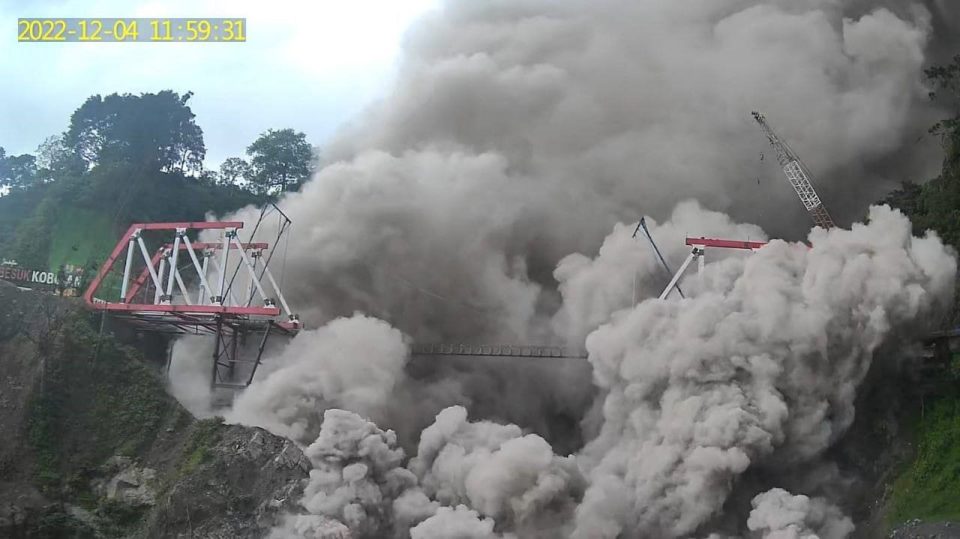
Indonesia's Mt Semeru unleashes lava river in new volcanic eruption

Indonesias highest volcano on its most densely populated island released searing gas clouds and rivers of lava on Sunday in its latest eruption.
Monsoon rains eroded and finally collapsed the lava dome atop 3,676-metre (12,060-foot) Mount Semeru, causing the eruption, according to National Disaster Management Agency spokesperson Abdul Muhari.
Several villages were blanketed with falling ash, blocking out the sun, but no casualties have been reported. Several hundred residents, their faces smeared with volcanic dust and rain, fled to temporary shelters or left for other safe areas.
Thick columns of ash were blasted more than 1,500 metres (nearly 5,000 feet) into the sky while searing gas and lava flowed down Semerus slopes toward a nearby river.
Increased activities of the volcano on Sunday afternoon prompted authorities to widen the danger zone to 8 kilometres (5 miles) from the crater, said Hendra Gunawan, who heads the Volcanology and Geological Hazard Mitigation Centre.
He said scientists raised the volcanos alert level to the highest and people were advised to keep off the southeastern sector along the Besuk Kobokan River, which is in the path of the lava flow.
Semerus last major eruption was in December last year, when it blew up with fury that left 51 people dead in villages that were buried in layers of mud.
Several hundred others suffered serious burns and the eruption forced the evacuation of more than 10,000 people. The government moved about 2,970 houses out of the danger zone.
Semeru, also known as Mahameru, has erupted numerous times in the last 200 years. Still, as is the case with many of the 129 active volcanoes in Indonesia, tens of thousands of people continue to live on its fertile slopes.
Indonesia, an archipelago of more than 270 million people, sits along the Pacific Ring of Fire, a horseshoe-shaped series of fault lines, and is prone to earthquakes and volcanic activity.
(Except for the headline, this story has not been edited by The Federal staff and is auto-published from a syndicated feed.)


